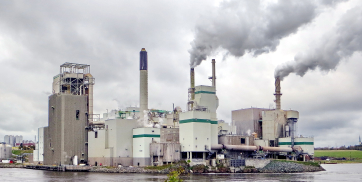PTAC's Methane Emissions Reduction Forum
PTAC’s Methane Emissions Reduction Forum (MERF) is back! This is a fantastic conference (if you like methane) and this year they’re going virtual. MERF will take place over two full days: November 4-5 2020. Countless fantastic speakers and panelists are already lined up. To register, see the agenda, or get more information, click here.
Secret hack: Registration is free for CRIN members, and CRIN membership is free. To join CRIN, click here.
On Day 1 of MERF, Highwood’s President, Thomas Fox, will be moderating a session called “Improving Methane Detection with Data, Digital Platforms, and Analytical Models”. This exciting session will feature panelists Dr. David Allen from the University of Texas, Austin, Dr. Matthew Johnson of Carleton University, and Dr. Chris Hugenholtz of the University of Calgary. Don’t miss it!
European Commission Methane Strategy
The European Commission has released its new strategy for reducing methane emissions from all sectors, focusing predominantly on energy, agriculture, and waste. This strategy is among the strongest globally and sets a new bar for methane reduction initiatives at the continental scale. For an overview of the strategy, click here, and for all the gory details (full document), click here.
Final New Mexico Emissions Rules
The state of New Mexico has released the final version of new regulations designed to reduce methane emissions in the Permian basin. In most cases, these regulations will require emitters to capture 98% of vented natural gas by 2026, and will allow emerging alternative technologies to play a role in monitoring. This is a big shift in methane policy in a major producing region, and a great news for emerging technologies seeking regulatory approval. For more info, click here.
CARB LDAR Report
The California Air Resources Board has released their annual LDAR summary for 2018. This is an important synthesis of a massive LDAR datast. The CARB report founds that a 29% reduction in methane emissions was achieved in the first year of LDAR, totaling 140,000 metric tons CO2e. CARB also found that fewer than 1% of surveyed components were leaking – most commonly connectors and valves. The report can be found by clicking here.
CARB LDAR Report
The California Air Resources Board has released their annual LDAR summary for 2018. This is an important synthesis of a massive LDAR datast. The CARB report founds that a 29% reduction in methane emissions was achieved in the first year of LDAR, totaling 140,000 metric tons CO2e. CARB also found that fewer than 1% of surveyed components were leaking – most commonly connectors and valves. The report can be found by clicking here.
EnviroVault Talk-o Tuesday!
Our friends at EnviroVault featured Highwood’s President Thomas Fox in their ‘Talk-o Tuesday’ initiative this week on LinkedIn. Go check out the post by clicking here!
New Science
Anna M. Robertson, Rachel Edie, Robert A. Field, David Lyon, Renee McVay, Mark Omara, Daniel Zavala-Araiza, and Shane M. Murphy
Researchers from the University of Wyoming and the Environmental Defense Fund performed vehicle based OTM 33A surveys in the Permian Basin. Emission rates for the New Mexico Permian basin were found to range from ∼520,000 to ~610,000 t/y, 5.5–9.0 times higher than EPA National Emission Inventory (NEI) estimates.




